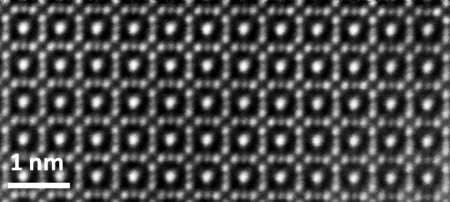Anindya Majumdar, a doctoral student in biomedical engineering at Michigan Tech, lights up a new way to view biophysical systems.
Specifically, Majumdar uses scattered coherent light to better understand the inner workings of cells. He recently presented his findings at SPIE Photonics West Conference alongside his advisor, Sean Kirkpatrick, the chair of the Department of Biomedical Engineering.
“The field of optics that Anindya works in, singular optics, is relatively new,” Kirkpatrick says. “He is one of the very few—if not the only researcher in the world—specifically looking at applications of singular optics to biomedicine."

Speckle Light
Light is either absorbed or scattered when it interacts with biological structures. Scattered coherent light, such as light from lasers, leads to an interference pattern known as speckle. Descriptively named, speckle is the result of interference—waveforms of different amplitude and phase mingle and scatter. These speckle patterns, while considered noise for many applications, carry information about the scattering medium.
“Laser speckle has long been used for imaging techniques such as laser speckle contrast imaging or measuring flow of fluids with scatterers in them," Majumdar says, explaining he uses algorithms to narrow down localized areas where the interference field is undefined. These mystery spots are called phase singularities. "We try to relate the dynamics of these singularities to the dynamics of the system that causes them. Some research on the properties of these singularities exists, but we are the first to discover a strong correlation between their dynamics and biological activity."
Majumdar looks at factors driving distinct decorrelation behaviors; in other words, what disrupts speckle fields. Decorrelation causes optical vortices to move around, and by tracking their locations, he is able to reconstruct their trails.

Different decorrelation behaviors represent different dynamics,” Majumdar says. His findings show that slowly decorrelating speckle patterns result in straight, long vortex trails, while rapidly decorrelating speckle patterns result in twisting, short vortex trails.
Vortex to Complex
Additionally, Majumdar discovered that different types of vortex motions produce different space and time measurements. “These are the behaviors that give us insight into what is happening in very complex biological systems. This work is also very exciting from a purely scientific point of view. We may be able to develop a better understanding of coherent wave fields, and the scattering and propagation of light,” he says.
Kirkpatrick says Majumdar's research is cutting edge and his work on optical singularities could yield new insights into complex biophysical dynamics. For example, the research could lead to new quantitative imaging tools that could advance understanding of the cellular dynamics involved in apoptosis (programmed cell death) or cellular differentiation.
"On a larger scale, his work could yield better insight into complicated biological flows," he adds. "There are applications in life sciences, as well as direct applications to the physical sciences, with implications across all disciplines—from biology and medicine to astrophysics and chemistry."
Crossing disciplinary boundaries shows that a little light—scattered and speckled—goes a long way.
Michigan Technological University is an R1 public research university founded in 1885 in Houghton, and is home to nearly 7,500 students from more than 60 countries around the world. Consistently ranked among the best universities in the country for return on investment, Michigan's flagship technological university offers more than 120 undergraduate and graduate degree programs in science and technology, engineering, computing, forestry, business, health professions, humanities, mathematics, social sciences, and the arts. The rural campus is situated just miles from Lake Superior in Michigan's Upper Peninsula, offering year-round opportunities for outdoor adventure.






Comments